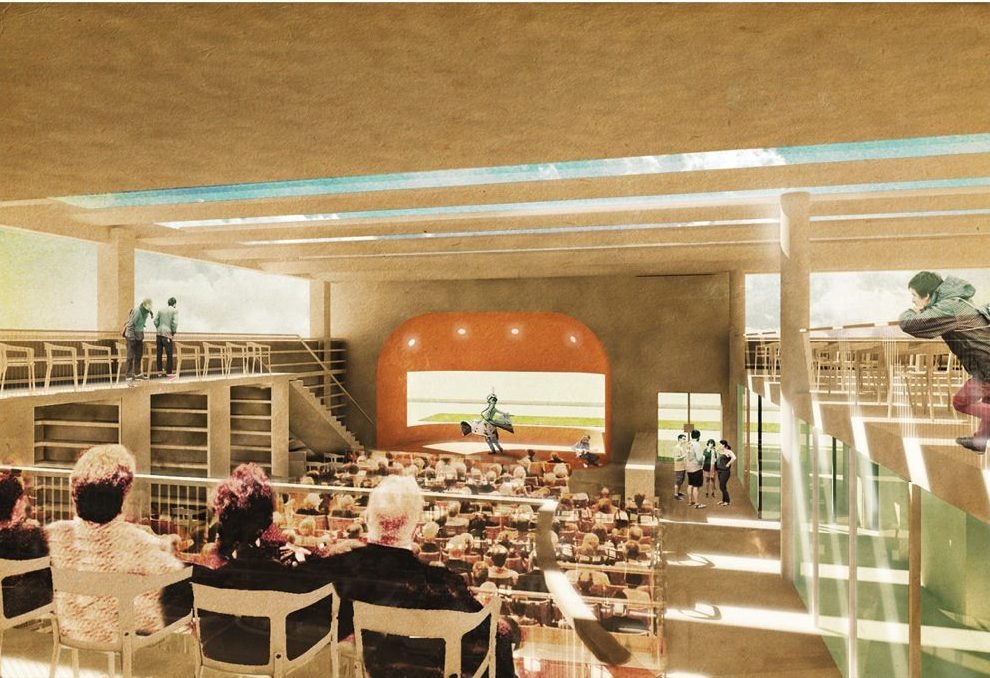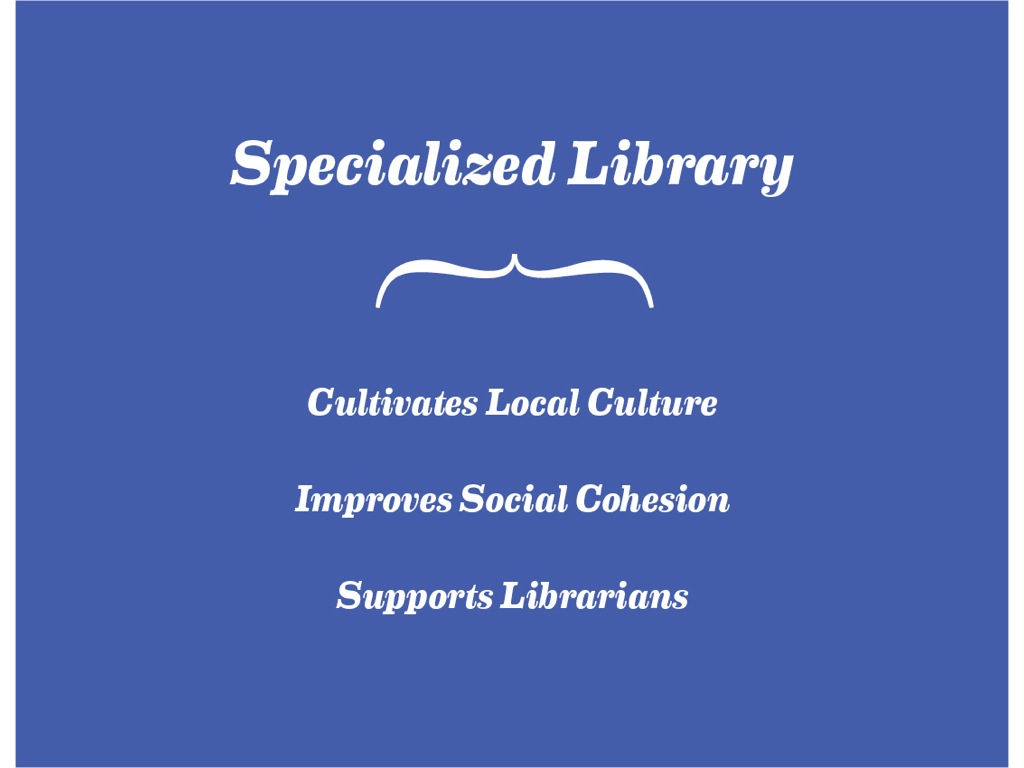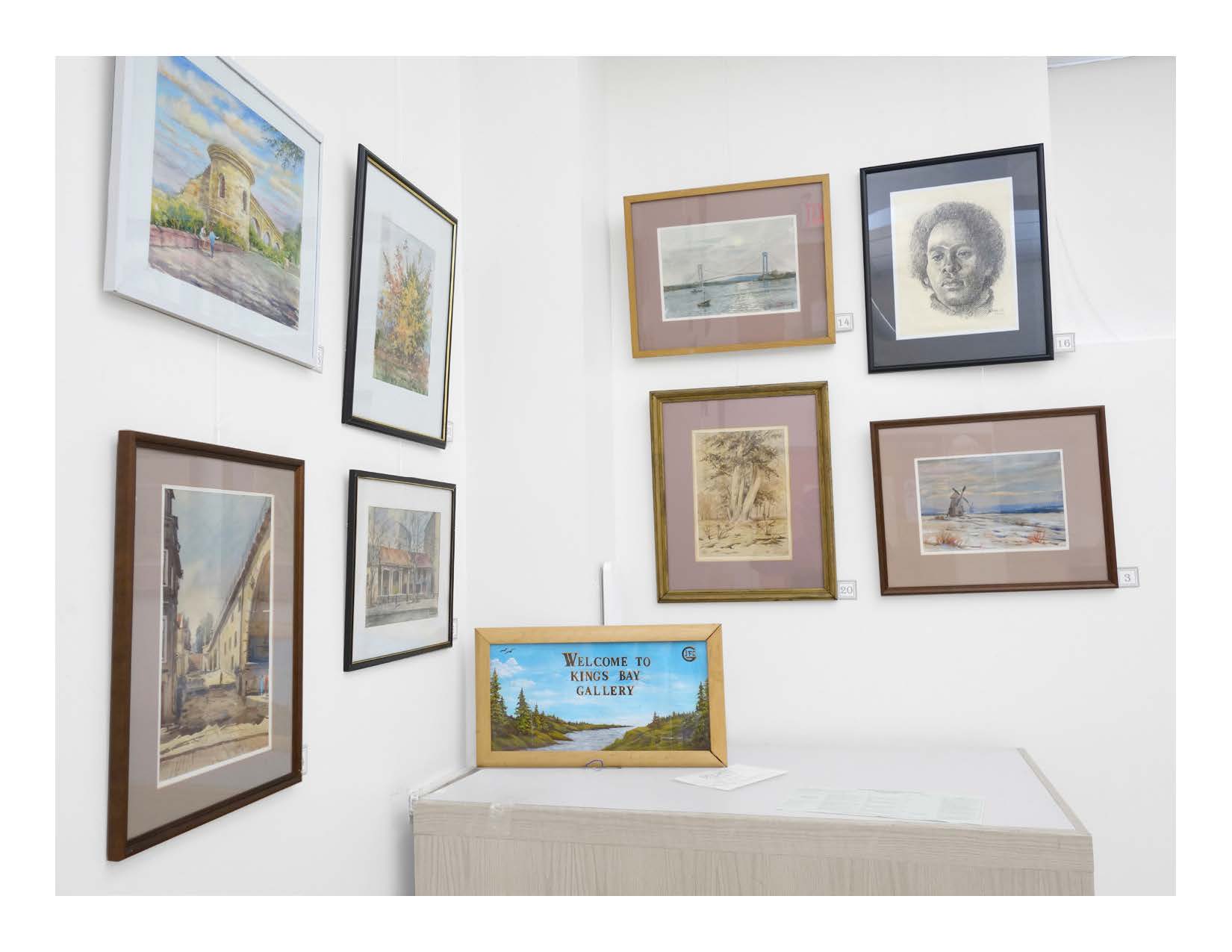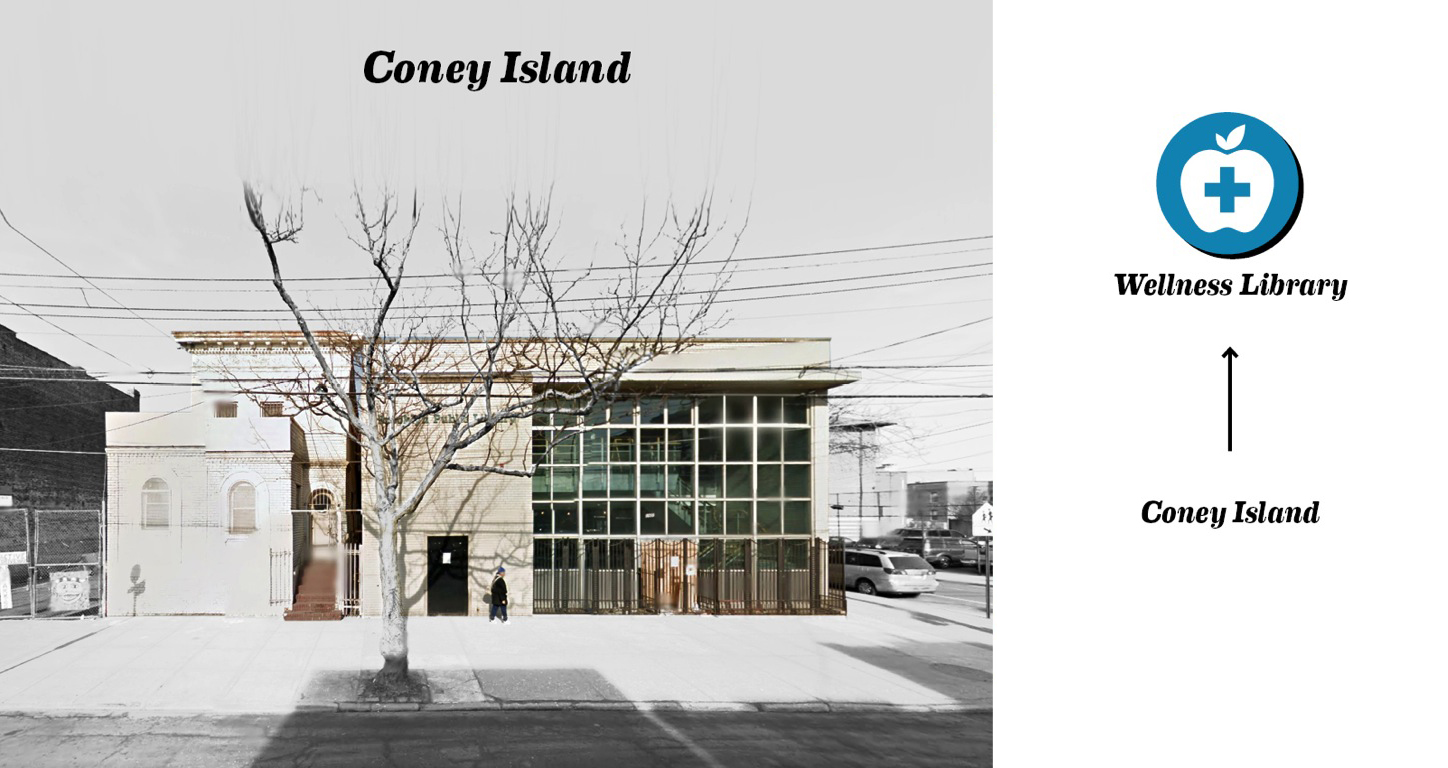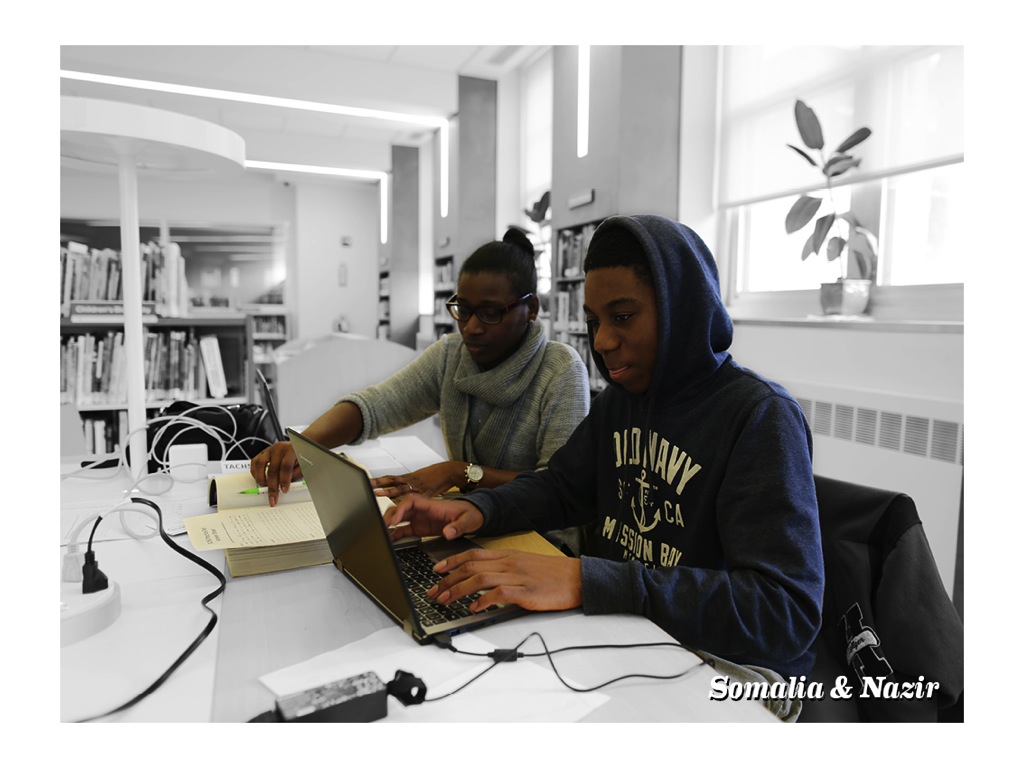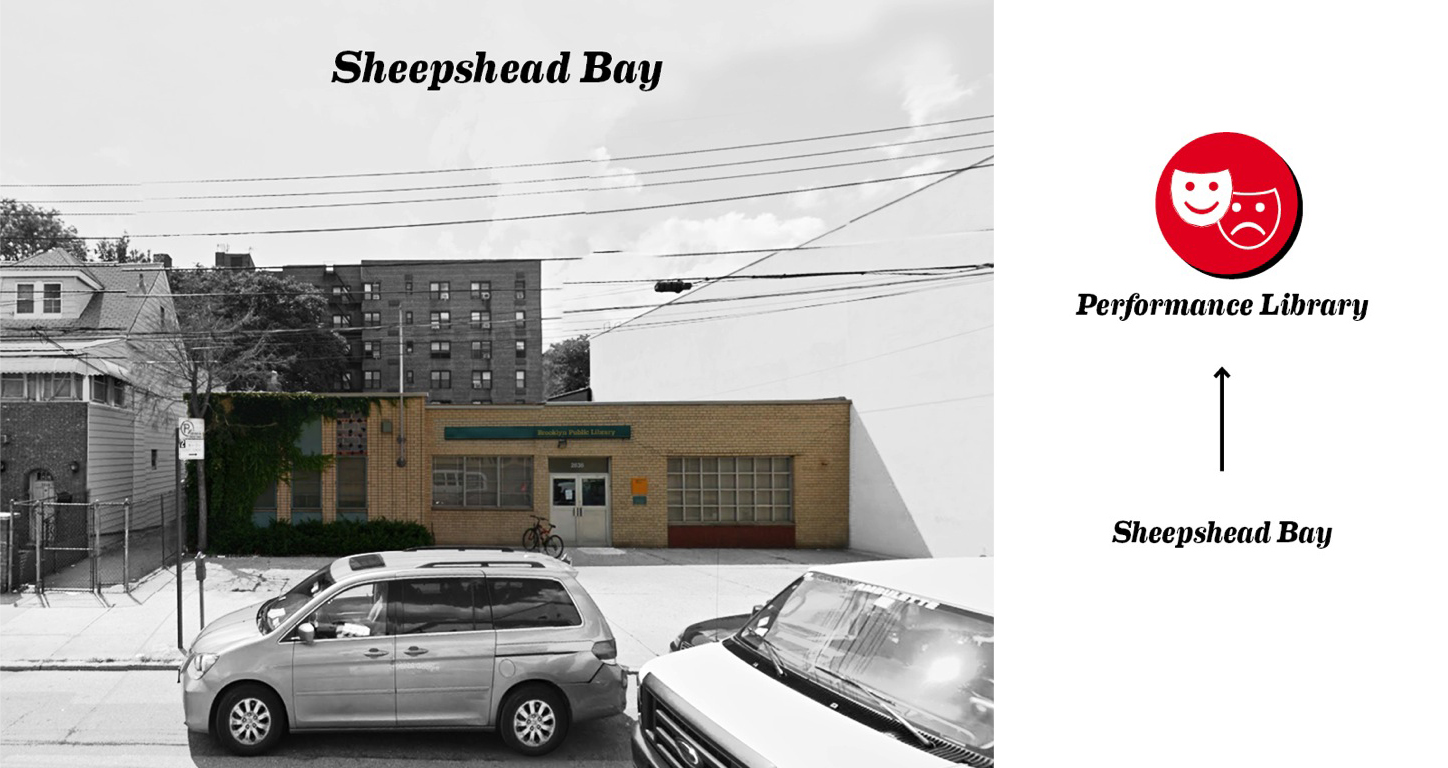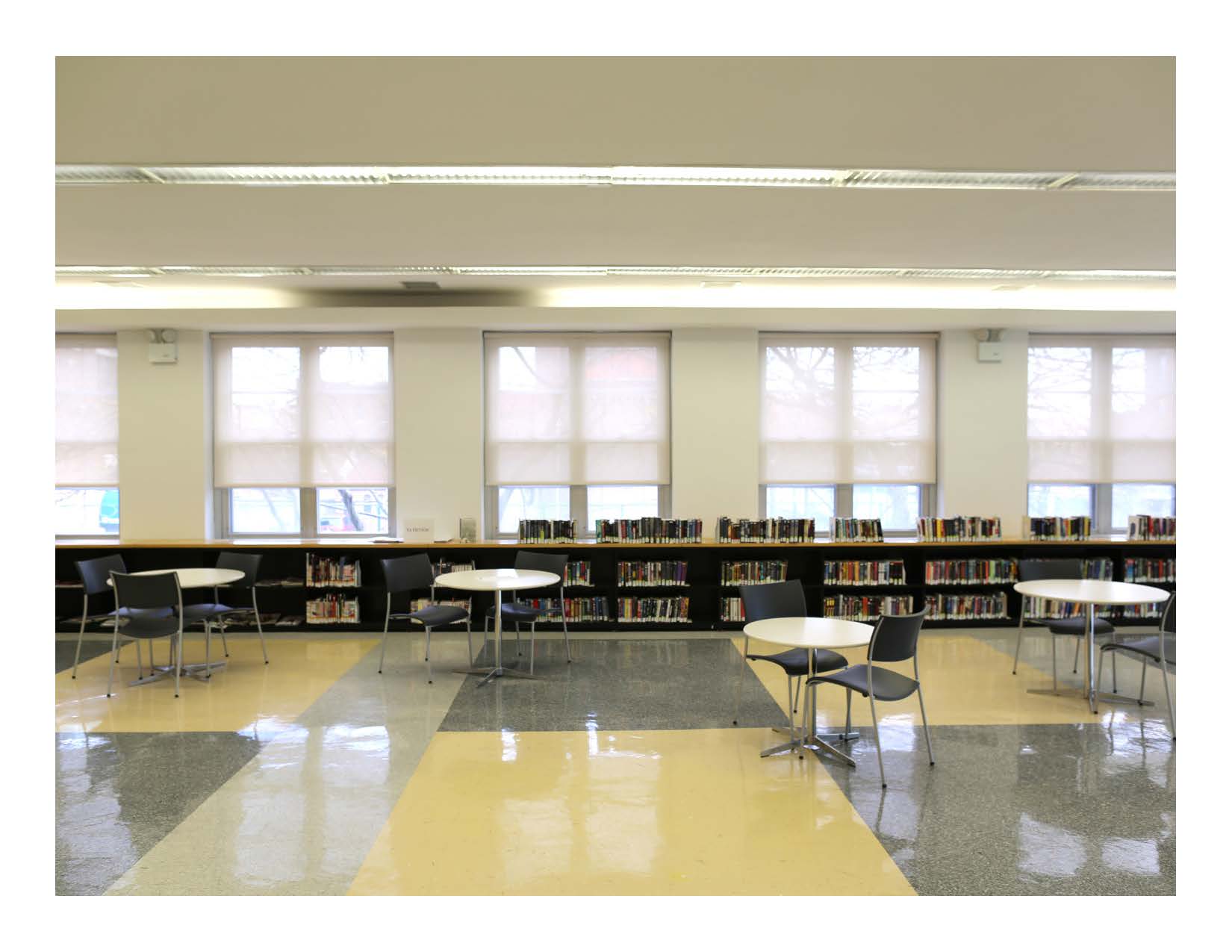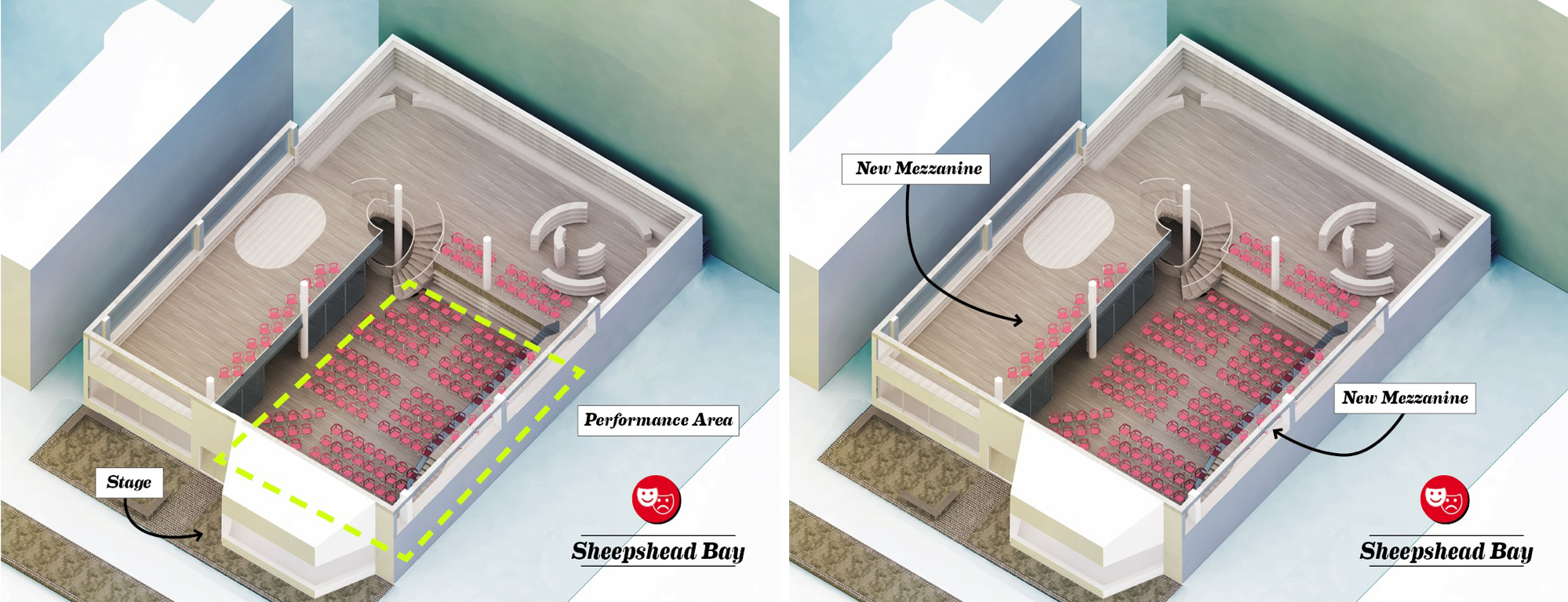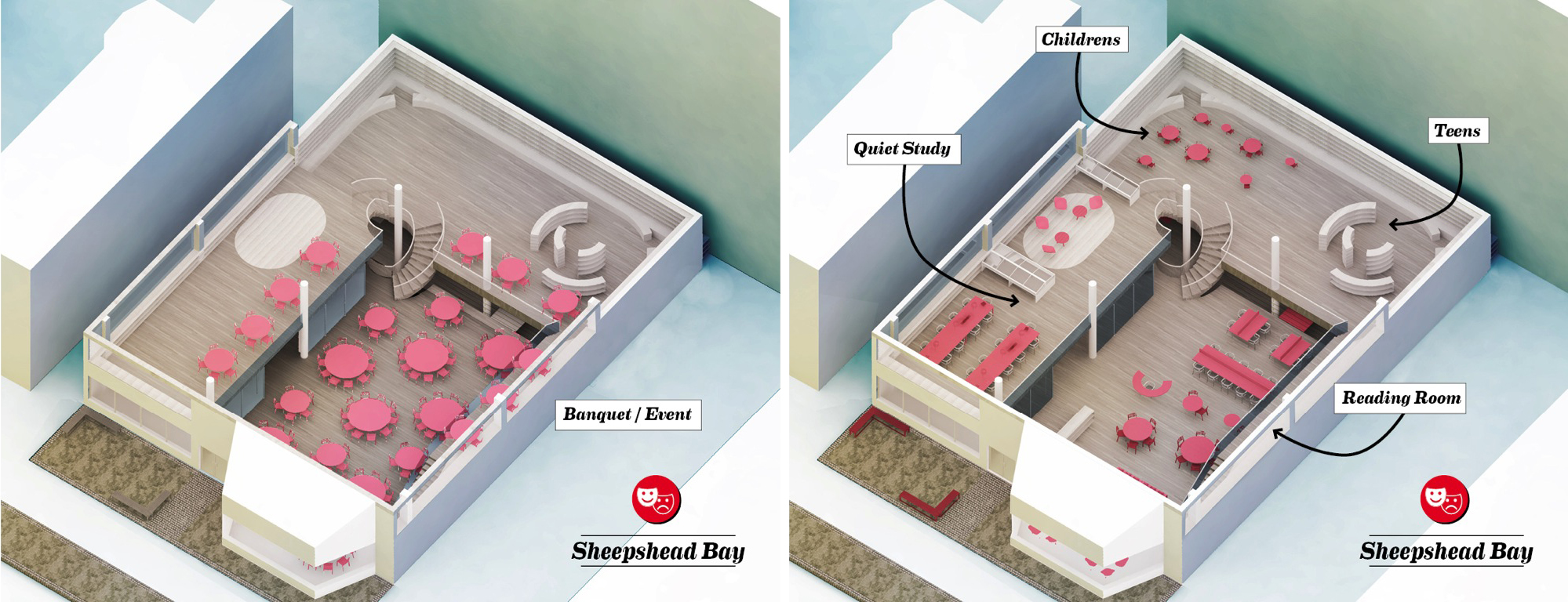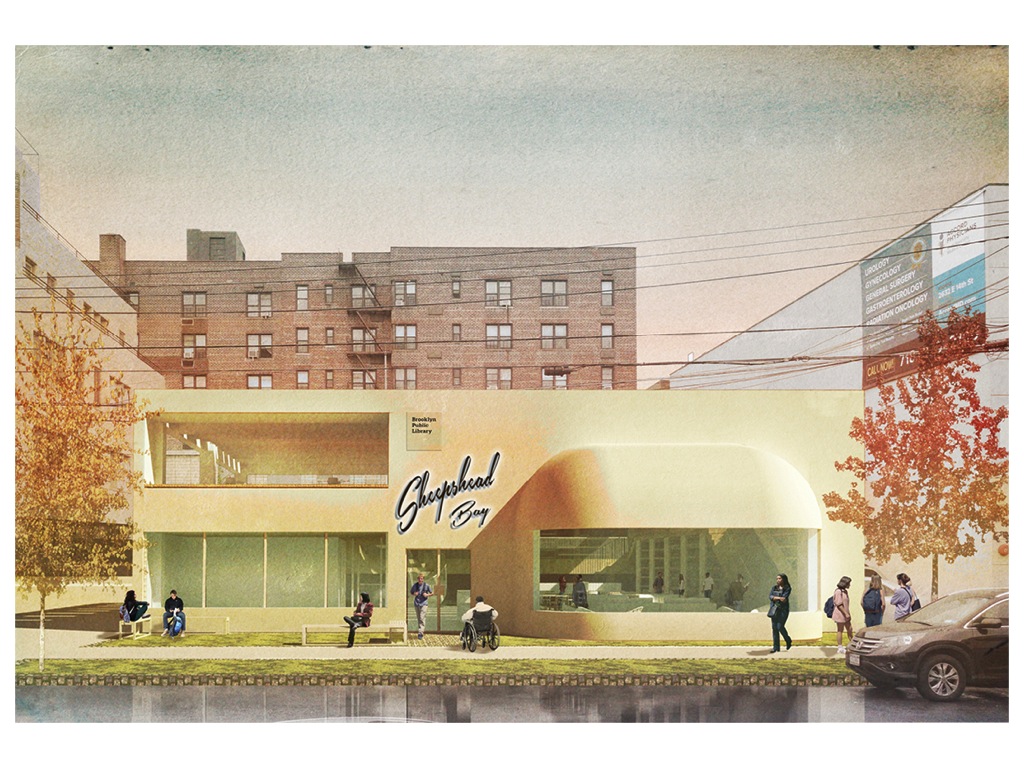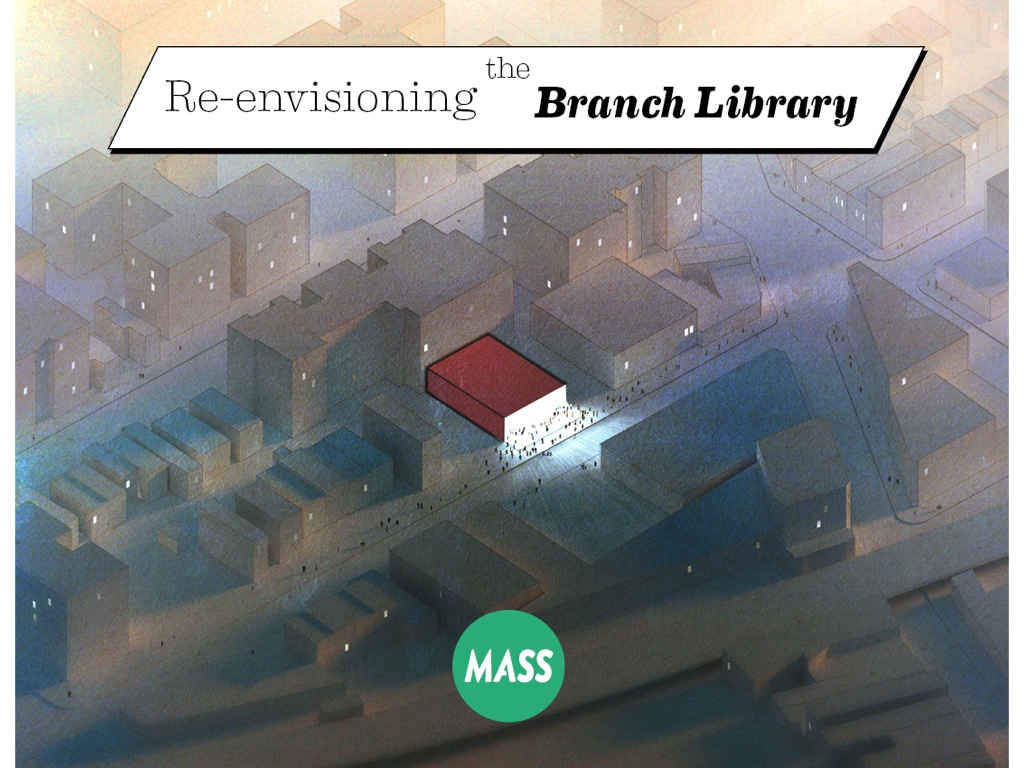Proposal | MASS Design Group
MASS Design Group
Michael Murphy, Michael Haggerty, James Martin, and Chitra Aiyar
MASS Design Group was one of five interdisciplinary design teams selected to participate in Re-Envisioning Branch Libraries, a design study organized by the League and the Center for an Urban Future in 2014. Read about their proposal below.
Developed through immersive research into the life and rhythms of branch libraries, MASS Design Group’s proposal seeks to amplify the distinct and exceptional qualities of individual branches and strengthen libraries’ role in the social cohesion of a community. To preserve and enhance the role of the library as a community anchor in the face of risk or change — whether demographic shifts or disasters like Hurricane Sandy — the team seeks to align the design of branch buildings with the unique social and cultural qualities of their neighborhoods. To do so, MASS proposes a strategy of specialization that better supports the distinctive services many branches already offer to their patrons in addition to the range of standard library resources.

Each library has a distinct social and intellectual culture, and the librarian is a critical figure in shaping the space.
Through observation and engagement with the branch librarians, administrators, and patrons, the team sought to tease out the unique qualities of the branches that may be obscured when considering the library system as a whole. This process revealed the extent to which a neighborhood library is a reflection of the skills and personality of the branch librarian, the demographics of the surrounding community, and the strengths and limitations of the building itself. Librarians and libraries already serve as connectors; we need to design spaces that help them do that work better. By emphasizing the qualities that make a branch successful and developing design strategies to support those uses, the building better reflects the patronage of the community and becomes a more resilient piece of the neighborhood fabric.

MASS visited more than 20 libraries citywide, then chose to focus on a group of libraries in southern Brooklyn that are geographically proximate but have very different identities: Gravesend, Kings Bay, Coney Island, and Sheepshead Bay. The team first toured the libraries with Sharron Lahey, Brooklyn Public Library’s Regional Supervisor for Southwest Brooklyn, who was able to situate each branch in both a highly local as well as a regional context. Through in-depth interviews with each of the four branch managers, themes emerged that defined the activity of the library — each librarian had a “unique aspect of their job that they particularly identify with,” explained MASS’ James Martin. The team was inspired by Svetlana, the Sheepshead Bay librarian who “had already done such a good job of coming up with these really unique programs that seemed to respond to the community in really unique ways.” These programs have included talent shows, a presentation by local Holocaust survivors, post-Sandy stress relief workshops, and Books & Cooks, for which high school students cooked from recipes found in the library’s collection.

Librarians filled out a time-use survey to identify how, and by whom, the space is being used throughout the day.
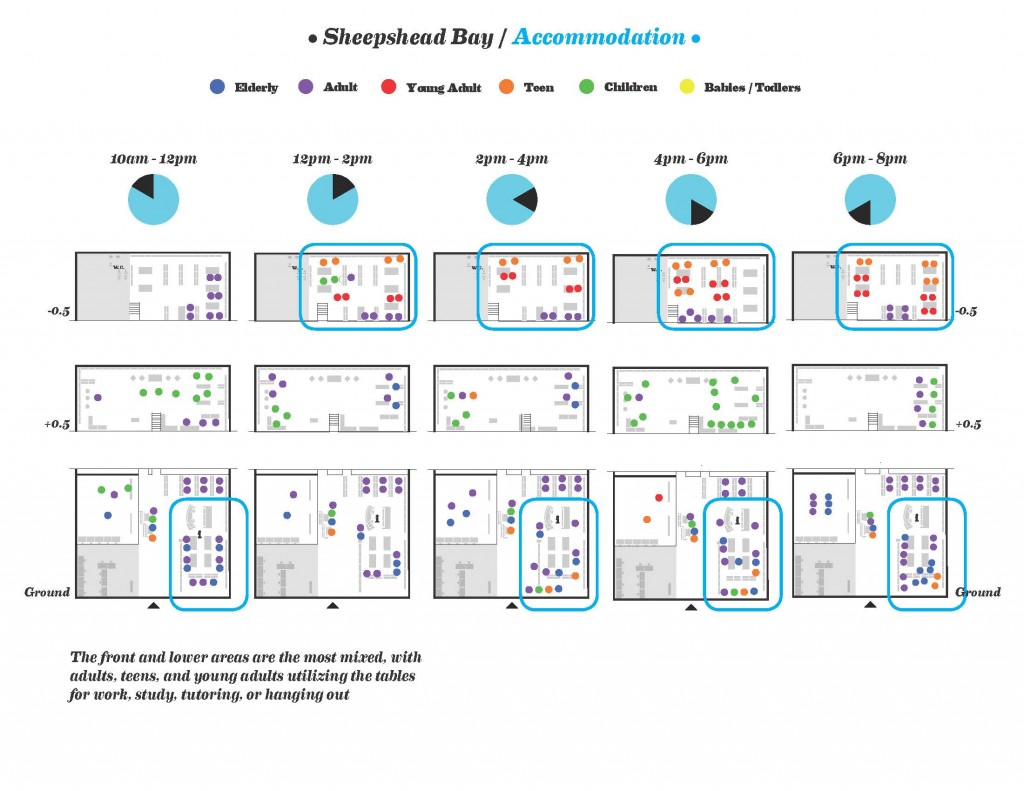
The surveys helped the team determine patterns of use and identify opportunities for interventions.
The team also made multiple site visits, taking photographs, talking to patrons, and conducting a time-use survey of library activity, which had branch managers identify on floor plans the ages and types of users in each part of the building during different times of day. MASS’ methodology reflects the team’s emphasis on the library as a public space, one of the only true communal, non-commercial spaces in a neighborhood.
They approached the design of the library like a neighborhood park — needing to accommodate a diversity of users and the informal ways that people use the space, while also serving as reflection of the local neighborhood.

From these site visits and their research, MASS identified seven types of specialized libraries to integrate into the system: Young & Old, Art & Making, Wellness, Performance, Professional, University, and Technology. The Library for the Young & Old was inspired by the Gravesend branch, which is primarily used by families with young children and the elderly, both groups that visit the library for socialization and community interaction. At the Kings Bay branch, the nearby Jewish Folk Art and Craft Guild has used the library’s program room as an art gallery with rotating exhibitions and other local groups have expressed interest in showcasing artwork. MASS saw the potential to pair that successful exhibition programming with dedicated space for the creation of artwork in an Art & Making Library.


Angela, Coney Island Branch Librarian
The idea for the Wellness Library resulted from their visits to the Coney Island branch, which serves a local community of all ages as well as a number of homeless individuals. This branch regularly provides food distribution services, immunization drives, and health and wellness information. The Sheepshead Bay branch frequently serves as an event space for talent competitions, banquets, and other social gatherings — with its dynamic librarian Svetlana as master of ceremonies — and already has a piano and public address system. The Performance Library would provide stage and gathering spaces to expand those offerings and encourage these lively community events.

Svetlana, Branch Librarian (and Master of Ceremonies) at the Sheepshead Bay branch
The team then looked to build on this existing social infrastructure through design modifications to the branch libraries that better support what the librarians are doing and allow them to serve as “mirrors of their communities.” Says Martin, “The interface between the [library] system and the people that use it are these buildings,” and the architecture can amplify the emergent specialization of the libraries, providing a connection to a specific place and culture and solidifying the branch library as a neighborhood landmark.
To demonstrate how this might occur, MASS developed two examples of designing for specialization:
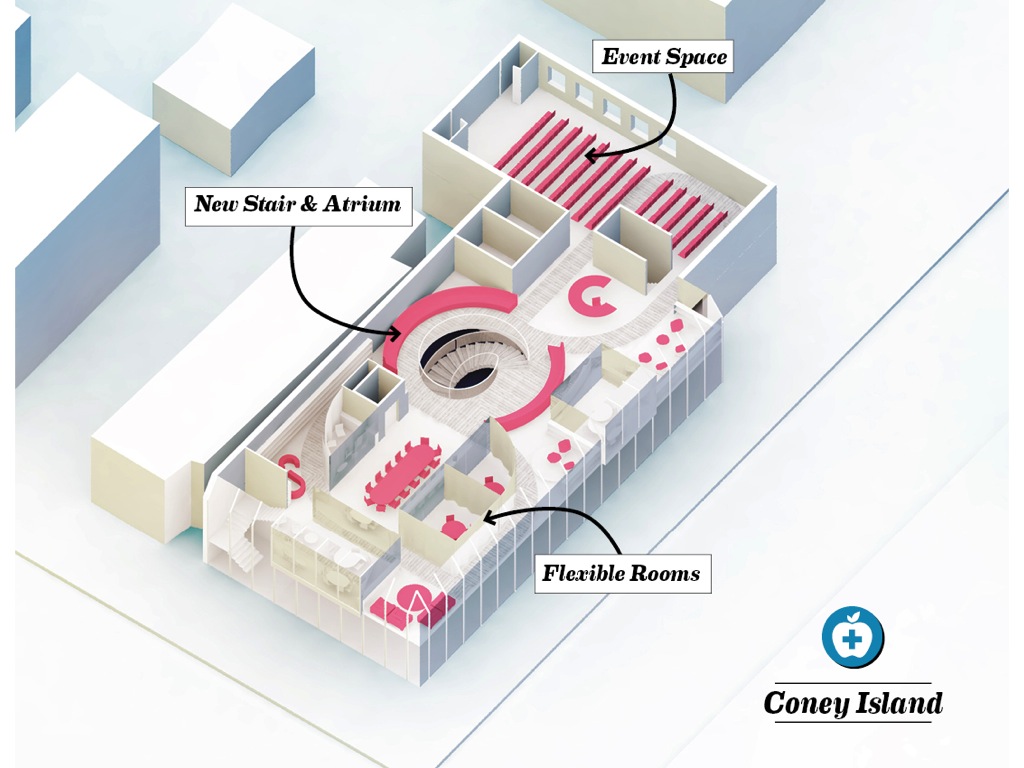
Coney Island, Wellness Library
At the Coney Island branch, the second floor (which currently resembles the ground floor, with a circulation desk, book stacks, and additional administrative areas) is entirely underutilized. MASS proposes reimagining the top floor as a multi-function space for health programs, with flexible meeting rooms and an event space with a boardwalk walking path that creates a circuit around the floor. The new spaces would be used for nutrition classes, distribution for mobile food programs, yoga or Zumba classes, and direct services like flu shots. A new, more prominent stair would connect the core services of the library on the ground floor with the specialized offerings housed upstairs.
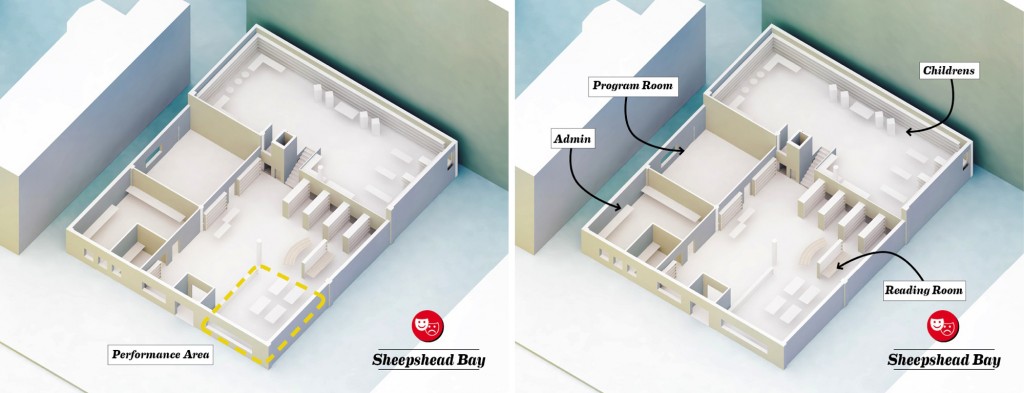
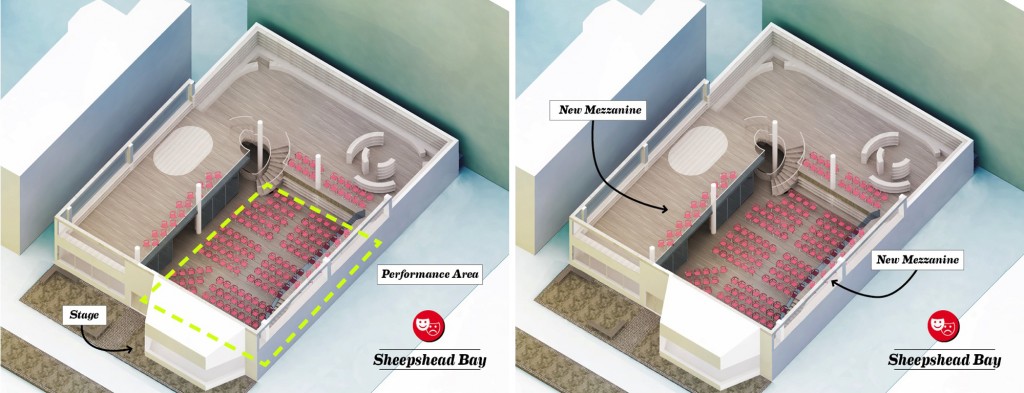

Sheepshead Bay, Performance Library
At the Sheepshead Bay branch, the current performance space is situated right next to the entry, but is hampered by book stacks and other physical limitations. MASS’ proposed addition creates a larger flexible performance area that opens up the existing compartmentalized interior and extends a stage out into the street, also modifying a dropped ceiling to make room for a mezzanine that can be used as an audience balcony. These new spaces can then be adapted for reading rooms, quiet study spaces, or children’s programs during regular library hours. Through these strategies, the library gains a new presence within the community and quadruples the space available for programs.

Specialized libraries complement one another, creating new relationships defined by local interests.
By amplifying the strengths of certain branch libraries, clusters of complementary libraries develop that better serve a regional population. These neighborhood clusters then feed into a citywide network that creates opportunities for shared resources and expertise among libraries with similar specialties. By designing for specialization, MASS seeks to build more shared ownership for individual libraries as well as enhance the library’s role in the social cohesion of both neighborhood and city.
⋅⋅⋅
DOWNLOAD PDF
Download a PDF of the team’s presentation to see more on this proposal.
VIDEO PRESENTATION
Michael Murphy and James Martin presented this proposal at a symposium co-hosted by the League and the Center for an Urban Future on December 4, 2014:

